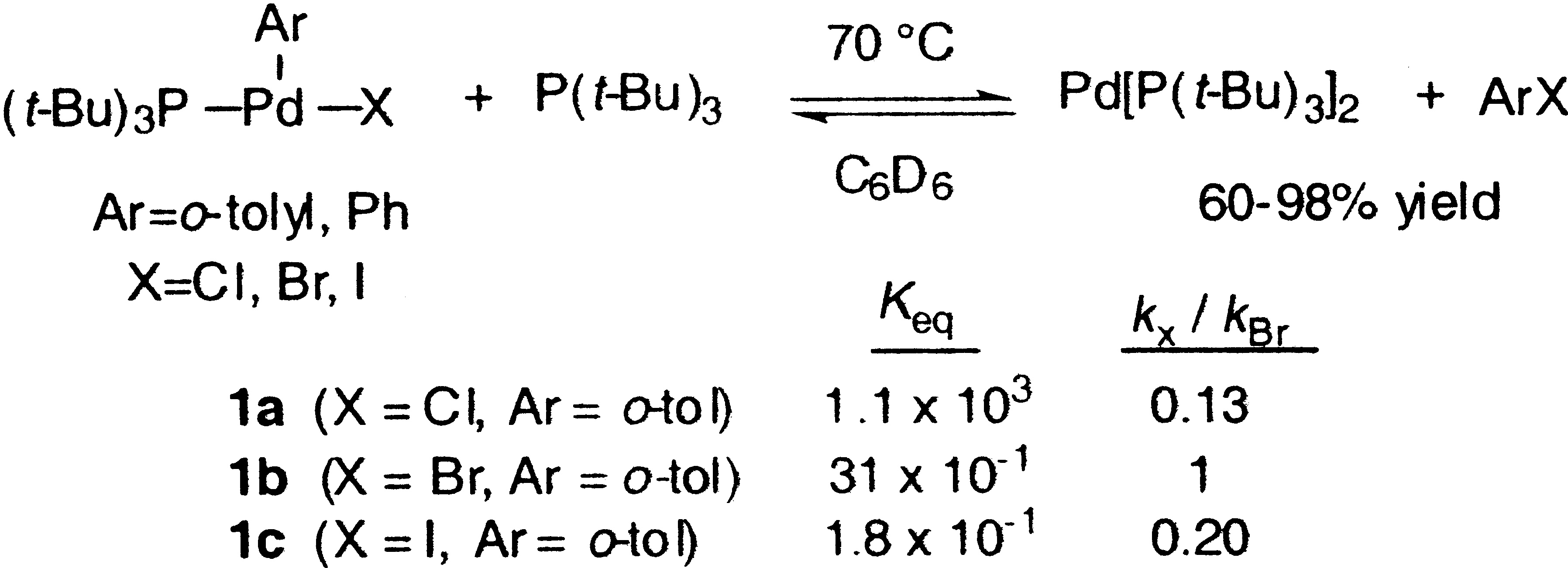Directly Observed Reductive Elimination of Aryl Halides from Monomeric Arylpalladium(II) Halide Complexes
J. Am. Chem. Soc., 2003, 125 (13944-13945)
View on publisher site
Abstract
Monomeric, three-coordinate arylpalladium(II) halide complexes undergo reductive elimination of aryl halide to form free haloarene and Pd(0). Reductive elimination of aryl chlorides, bromides, and iodides were observed upon the addition of P(t-Bu)3 to Pd[P(t-Bu)3](Ar)(X) (X = Cl, Br, I). Conditions to observe the equilibrium between reductive elimination and oxidative addition were established with five haloarenes. Reductive elimination of aryl chloride was most favored thermodynamically, and elimination of aryl iodide was the least favored. However, reductive elimination from the aryl chloride complex was the slowest, and reductive elimination from the aryl bromide complex was the fastest. These data show that the electronic properties of the halide, not the thermodynamic driving force for the addition of elimination reaction, control the rates for addition and elimination of haloarenes. Mechanistic data suggest that reversible reductive elimination of aryl bromide to form Pd[P(t-Bu)3] and free aryl bromide is followed by rate-limiting coordination of P(t-Bu)3 to form Pd[P(t-Bu)3]2.
Read on publisher's site